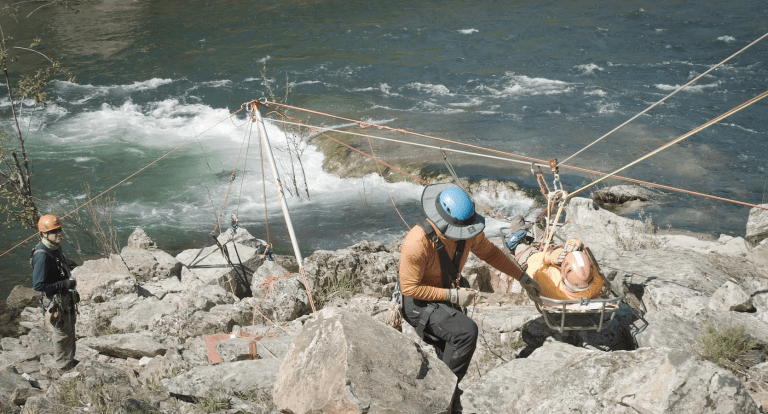Innovations in Rescue Rope Technology (2014-2024) for Fire, SAR, and Industrial Rope Rescue
Over the last decade, significant advancements in rescue rope technology have transformed the way fire service, search and rescue (SAR), and industrial rope rescue teams perform high-stakes operations. Ropes are no longer just tools—they have evolved into highly engineered, specialized components of comprehensive rescue systems. From advanced materials to real-time performance monitoring, the following innovations have elevated both safety and functionality.
1. Advanced Materials and Low-Stretch Technology
Modern rescue ropes have moved beyond traditional nylon, integrating advanced materials such as High Tenacity Polyester (HTP), Dyneema (HMPE), and Kevlar. These materials offer:
- Increased Strength-to-Weight Ratio: These ropes are incredibly strong while remaining lightweight, an essential feature for fire and SAR teams that often work in rugged environments or at great heights. CMC’s Static-Pro™ is an example of a rope with very low stretch, offering superior control during high-angle operations
- Low Stretch for Precise Handling: Many technical rescues require low elongation to ensure stable operations, especially when working in confined spaces or performing high-angle rescues. Ropes like CMC’s G11 Lifeline provide the necessary stability, meeting NFPA standards
2. Force-Limiting Technology and Safety Enhancements
Safety is at the forefront of every rescue operation, and the last decade has seen significant improvements in this area:
- Force-Limiting Cams: Devices like the CAPTO™ by CMC feature force-limiting V-groove cams that slip under overload conditions, protecting the rope system from catastrophic failure. This kind of technology has become essential for operations in unpredictable environments, where sudden load increases can compromise safety
- Integrated Devices for Multi-Use Operations: CMC’s CLUTCH™ by Harken provides seamless control for lowering, raising, and personal descent. It combines braking, belaying, and hauling functions into one device, enhancing both safety and efficiency in fire, SAR, and industrial rope rescues
3. Innovative Device and System Integration
Rescue teams increasingly rely on ropes integrated into larger systems for better performance and reliability:
- Pulley and Rope Grab Innovations: The CAPTO™ system combines a rope grab, pulley, and becket in one, making it easier to build mechanical advantage systems quickly and efficiently. This versatility is crucial in both urban firefighting and remote SAR operations where speed and adaptability are key
- Mechanical Advantage Systems: CMC and Petzl have both introduced ropes and devices that make rigging simpler and more effective. For example, the Petzl RIG and I’D Descenders allow for smooth, controlled descents in vertical environments, making them ideal for industrial rope access and rescue teams working in towers or other elevated settings.
4. Smart Ropes: The Future of Rescue Operations
Though primarily used in the maritime sector, smart ropes like Timm Smart Ropes represent a potential future for rescue teams. These ropes are embedded with sensors that provide real-time data on load, tension, and wear. While still not widespread in fire or SAR operations, such technology could offer significant benefits in:
- High-Risk, High-Load Operations: For example, industrial rope rescue teams working in high-angle environments could use smart ropes to monitor tension and load in real-time, ensuring rope integrity throughout the operation.
- Critical Rescue Scenarios: Whether lowering a firefighter into a confined space or performing a complex SAR operation on a mountainside, real-time data from smart ropes could provide rescue teams with early warnings of potential rope failure.
5. Sustainable Materials for Long-Term Use
Another trend in rope technology is the shift toward sustainability. Many rescue rope manufacturers, including CMC, are using eco-friendly treatments and moving away from harmful chemicals like PFCs in waterproofing treatments. This shift reduces the environmental impact while maintaining the high-performance standards required for rescue operations.
Conclusion: A Decade of Progress and the Road Ahead
From advanced materials to integrated force-limiting devices, the last decade has seen remarkable progress in rope technology for fire service, SAR, and industrial rescue teams. These innovations have made ropes lighter, stronger, and safer, allowing rescue professionals to operate more effectively in high-risk environments. Looking ahead, the integration of smart rope technology and continued advancements in sustainability promise even greater capabilities in the next generation of rescue ropes.
Peace on your Days
Lance









